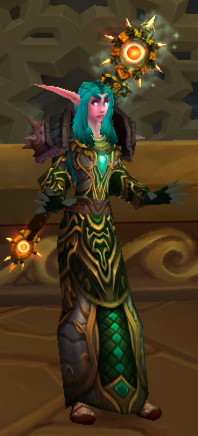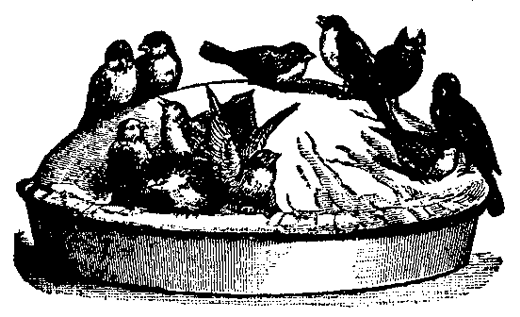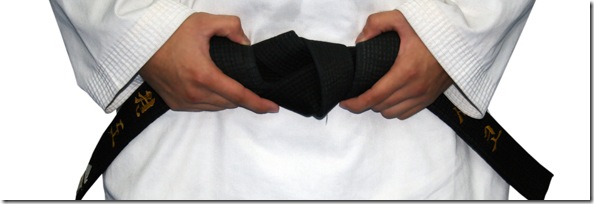
This is a guest post from Derevka who has been actively blogging on his blog Tales of a Priest. This post is in reply to Healing Meters Suck and tries to tie in some qualitative and quantitative healing performance analysis.
Healing Meters suck? I tend to disagree. Healing meters and WWS Reports provide an insane amount of information and value to a well educated healer. But now where does that leave us? You have 11 healers signed up for tonight’s raid and only 7 healing slots available — or you have a new recruit healer and you need to evaluate how they are performing. What do you do? How do you go about evaluating healers in a world where the DPSers are e-peening over their DPS and Total Damage Done?
Nearly a year and a half ago, Priestly Endeavors did a post about measuring healer performance. This is a great post, and I encourage everyone to read it. Perhaps it is time to reflect on what methods are best to evaluate a healer?
Healing Meters: Recount & WWS
Gasp! Hiss! Boo! There is a lot more to healing than just meters, yes, but don’t forget there is a lot of very valuable information here. The trick is finding the best way for you to harness this data to evaluate yourself and your healing team and learn where can you improve.
The first thing you need to understand about deciphering healing meter data is knowing the encounter that the data is from. Looking at a Recount data from Malygos is going to heavily favor the COH Priests and WG Druids, thanks just to Vortex. (While post-3.08 that may change; I don’t think it will skew it that much). You always need to ask yourself "Does this fight heavily favor a specific spec/class over another?". If the answer is yes, you have to both qualitatively and quantitatively account for that information.
Finding out how much effective healing was done by Priest X using COH over other spells can be done in Recount and WWS. If it is a fight that doesn’t have a ton of AOE damage, and a priest has 20% of the effective healing of the 7 healers, of which 70% was COH, you might have a performance problem here.
Discipline Priests typically are low on the healing meters since PW: Shield, Grace, and Divine Aegis have no impact on effective healing. How do you evaluate a Disc priest on a numbers game in which they are at a disadvantage? However, with a bit of poking around you should be able to find some good data in there. On a conceptual level, PW:S is the only spell in the game that guarantees zero "overhealing".
So dive into WWS information. Find out how many times that player buffed the MTs with PW:S then you can gauge the total "effective healing" those shields provided. (I know, not an exact science since you need to weigh in SP coefficients, did the whole shield get eaten, etc. But it does provide additional data that WWS/Recount completely disregarded).
Since we are playing the numbers game using meter evaluation, does that mean it is okay for them to be dead last on the meters with 3% healing done on a fight? Maybe… however, likely not.
Healer Focus and Assignments
Plain and simple: are your healers focusing on the task at hand? Are they sticking to their assignments and trusting their guildmates? Trusting your fellow raiders to do their job is key. You cannot be all things to all people. This often can be easily discovered if you see the healer switching to other healing assignments and slacking on their primary target. Great example would be Patchwerk. You have a healer who was assigned to heal a Hateful Strike Tank, they shift focus to try to get a heal on the Main Tank — BOOM! Your resident Enhancement Shaman eats a hateful strike and dies.
Also data lives on WWS that can also provide good insight, but again keep the encounter and assignments in mind! This report can be found in the "Who Heals Whom" section. The smaller the number the fewer the people that person healed. A high focus number can generally mean the person healed "randomly" and may have deviated from their assignment. On fights that have AOE damage or multiple targets assigned to the same healer, focus numbers can increase for certain healers. A great example is my guild’s Sartharion 2-Drake strategy: We let the Tenebron’s whelps pop, and AOE them down (and usually have some AOE damage to the raid as a result), and send in a DK , DPS, and 1 healer to heal the damage for Shadron’s Disciple. That healer, typically has a higher than average focus. Again, it is all about knowing which fight you are analyzing.
Ability to React to the Unforeseen
This measurement is very subjective, and not numerical so it is often very hard to guage. When you see it happen, it is usually quite apparent. Sometimes a healer disconnects or dies mid fight, and you need to react. Good healers are able adjust when this happens, take adjusted healing assignments. Great healers excel in these situations. They thrive.
An example would be the healers for Lady Blaumeux and Sir Zeliek on Four Horsemen. Lets pretend one of your ranged tanks DCs. This healer quickly adjusts, calls out on vent they are now tanking Blaumeux (along with the other ranged tank) and spams heals on themselves until a new ranged player comes to replace them from the front group. No one else dies, as you get your shiny epics from the chest minutes later.
This measurement encompasses the "don’t stand in the fire" rule: Situational Awareness.
Are you in Sartharion’s Void Zone? Are you standing in Sapphrion’s Blizzard? Now these points, are easily counted.
The Death Test
Probably the easiest to check, but perhaps the most subjective of all. If your assigned target not die, you win. Generally, yes – but not always. You need to look at the bigger picture. Did they go OOM and another healer have to step up and do double duty? Did they lose awareness and chain a KT Frost Blast to the melee?
Evaluating healers is not easy. I am typically the one to do healing assignments, and often the officer to pass final judgement on a recruit healer. When I say /promote or /gkick, or when I chose one healer over another healer when making up the raid roster for the evening, I often have a lot of math and though behind those decisions. Using WWS and Recount, as well as many subjective methods.
Ultimately your healing roster and performance is something that should be constantly evaluated. Finding out your flaws, and taking steps to correct them is one of the best ways to improve; diving into the details really is the best way to do that.
Further reading:
Matt wrote a Spiritual Guidance column on WoW Insider several months ago titled: Measuring a Priest. Several of those points still ring true today.
Image courtesy of danzo08

 Yes, he sure did. However, when we’re talking about a rerolled character or an alt, there are a lot of reasons for guild leaders to say no. For example, let’s take Sydera. She’s been all the way through TBC and the current Wrath content, and somewhere along the way, her operator learned a thing or two about healing on a druid. When I take my warlock out for questing, I’m less quick to react than I am on Syd. It’s like playing a stranger. I might be able to learn another healer, but I don’t think I’d ever post great numbers as a raiding warlock. For high-end raiding, the absolute optimum scenario is for everyone to play one class of their choice and to build the team based on those choices. Changing things up mid-stream is uncomfortable both for the leadership and for other players.
Yes, he sure did. However, when we’re talking about a rerolled character or an alt, there are a lot of reasons for guild leaders to say no. For example, let’s take Sydera. She’s been all the way through TBC and the current Wrath content, and somewhere along the way, her operator learned a thing or two about healing on a druid. When I take my warlock out for questing, I’m less quick to react than I am on Syd. It’s like playing a stranger. I might be able to learn another healer, but I don’t think I’d ever post great numbers as a raiding warlock. For high-end raiding, the absolute optimum scenario is for everyone to play one class of their choice and to build the team based on those choices. Changing things up mid-stream is uncomfortable both for the leadership and for other players.


